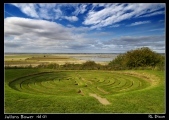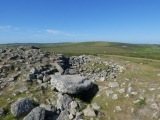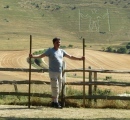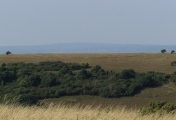Andy Burnham's Blog, page 132
August 12, 2022
St Peter's Church (Croft-on-Tees)
The interior of the church contains two cross shaft fragments, a likely sheela-na-gig (pictured), and a carving said to be the inspiration for Lewis Carroll's 'Cheshire Cat' (see further down our page). In the external walls are some other fragments, including a third cross shaft fragment, a scratch dial, and part of a carved Romanesque lintel. Guy Points, in his Yorkshire Gazetteer of Anglo-Saxon and Viking Sites (page 130) tells us the church is "evidently on the site of an earlier 11th century structure", with the evidence provided by the cross shaft fragments which date from the 8th to 10th centuries.
Published on August 12, 2022 15:46
Dorstone Hill
New paper on rock crystal at Dorstone Hill: "Far from being used to make tools, we argue the distinctive material was being used to create distinctive and memorable moments, binding individuals together, forging local identities, and connecting the living and the dead.". Remains of Neolithic enclosed settlement and later Bronze Age earthwork. First excavated in 1965-1970 and 1995. Suffered much damage from the plough. Nearby are the remains of two large 6000-year-old halls, each buried within a neolithic long barrow. More recently excavated by archaeologists from The University of Manchester and Herefordshire Council between approx 2015-2019.
Published on August 12, 2022 05:58
August 11, 2022
Capelcrag Beck
Two ring cairns on Kinniside common, North of Capelcrag Beck.They are quite large, but not in the best of condition. It's a bit of a walk to get to, but as well as these two ring cairns there are other features nearby that may, or may not be prehistoric, but worth a look none the less.
Published on August 11, 2022 10:43
August 10, 2022
Julian's Bower
Caerdroia is the long-running Journal of Mazes & Labyrinths, published by Labyrinthos. They now have selected articles and journal issues available for free download, more in the comments on our page. A rare medieval earth and grass maze, cut into the landscape at Alkborough in north Lincolnshire. A twisting and turning labyrinth of interlocking rings measuring 13.5m (44ft) across. Restored in recent years but the volunteers said they are no closer to solving the mystery of why and when it was made.
Published on August 10, 2022 07:28
Chapel Carn Brea Tomb
Originally a Scillonian Chambered Tomb, but which has been built upon at later times. Could it once have been a bit like Carn Gloose, with a large internal cairn surrounded by a ring, with at least one chamber? Based on current ideas the first tomb was a neolithic entrance grave 9m (30 feet) across and containing a 2.7m (9 foot) long south-facing chamber with a tapered inner end and two capstones.
Published on August 10, 2022 00:53
August 9, 2022
Loher Stone Fort
Ring fort in excellent condition in Co. Kerry. Preserved and restored by the Office of Public Works, with information board.
Published on August 09, 2022 11:59
August 8, 2022
Wilmington Hill Tumulus
Last Saturday Jon Morris led a walk to the barrows above the Long Man of Wilmington, and showed us how to measure the size of the world. More details on this page and here on my Twitter thread.. A bowl barrow in East Sussex, about 12m in diameter and 0.8m high, with traces of a ditch visible as a darker shade of grass around it.
Published on August 08, 2022 11:19
Combe Hill Enclosure
Rather a nice telephoto view of this hard-to-photograph site if I do say so myself. Neolithic causewayed enclosure in East Sussex. Some Early Bronze-Age beaker pottery was also deposited in one of the enclosure ditches.
Published on August 08, 2022 11:18
August 7, 2022
The Selus Stone
The Selus Stone at St Just, Cornwall. Inside St Just's Church there is a 5th or 6th century pillar stone with a Latin inscription and a chi rho cross. It commemorates St Selevan or Levan, the brother of St Just (Jestyn). Originally it was built into the church wall near the altar, but in 1824 it was stood up-right. Standing at 5 foot 5' tall, on a large square base, it is a Romano-Christian stone.
Published on August 07, 2022 05:53
August 5, 2022
The Lyde Spring
The spring and pool are in a steep gully situated in Lord Carrington's Lyde Gardens (often open and free to enter) next to the 12th century Holy Trinity Church. The east side of the churchyard overlooks the gully where water from eight springs emerge. The area has been considerably developed with walkways, bridges and a small colonnade at the southern end creating a very peaceful atmosphere.
Published on August 05, 2022 12:23













